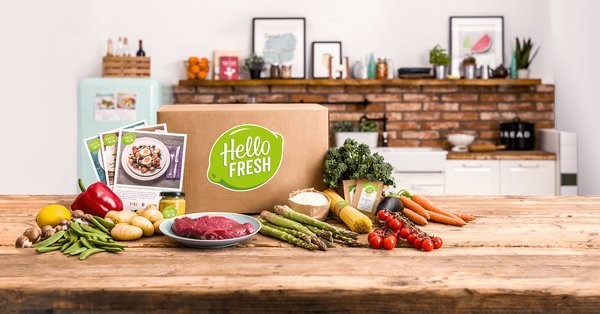In the kitchen these days, it seems Americans want to save time but not squander health and nutrition. That explains why, according to a recent Harris Poll, ¼ U.S. adults purchased a meal kit in 2016 and why 70% of them said they will do it again.
With Blue Apron’s sales reaching half a billion last year, and meal kit subscribers, who tend to be grocers’ most profitable shoppers, spending between .5% and 3.1% less per grocery store visit after starting their subscriptions, grocers should be exploring market research programs that will offer them insight into how to defend their territory.
Grocers Can Provide Convenience
But let’s back up. What is a meal kit in the first place? They are exactly what you imagine them to be: usually boxes of the premeasured fresh ingredients and the recipe necessary to make an at-home meal in under an hour. But their success is more complicated than that.
As consumers increasingly look for unique eating experiences—trying unfamiliar ethnic foods and other forms of adventurous eating—meal kits offer a relatively safe way for customers to experiment.
And with the supermarket still being a part of most people’s weekly routine, a rededicated retailer could reassert themselves by offering exciting, convenient, and healthy meal kit options in their prepared foods section.
These options could showcase products their customers already love, ones they are curious to try, and the ones they will love even if they don’t know it yet. What’s more, grocers could even build meal kits around items they need to move quickly for whatever reason—be it impending expiration or items that just won’t sell.
What to Put in A Meal Kit
What would these meal kits look like? How about a Thai recipe that combines familiar ingredients like carrots, peanuts, and chicken with unfamiliar ingredients like fish sauce, lemongrass, or bok choy? This would result in a dish customers have perhaps tried before at a restaurant and are now willing to experiment with at home. Such offerings expand customers’ interest in heretofore unconsidered products while also leaning into their urge to explore.
Or consider a family-friendly meal kit that emphasizes healthy, fun food that children will enjoy. Perhaps a healthy twist on chicken nuggets or macaroni ‘n’ cheese—something that will save parents time, that kids will enjoy, and that could easily become part of a family’s weekly routine.
One final example: a vegetarian meal composed of meat analogs that could entice non-vegetarians. The lower price point of a vegetarian meal offered in a familiar form (tempeh-based sloppy joes, or grilling a block of tofu instead of a rib-eye for example) and the convenience of a meal kit just might be the push many Americans need to cut back on meat.
As grocers, you will not be the first to the party, of course. Hello Fresh and Blue Apron are already well out in front, and new competitors emerge nearly every day. Heck, Tom Brady is even getting in on it…and let’s watch and see what happens now that Amazon has put its full weight behind them.
How to Regain Wallet Share
Right now, your priority should be retaining or regaining the wallet share you already lost to meal kits. That’s because, whether you know it or not, meal kits have already taken a bite out of your business. Meal-kit subscribers tend to be more affluent than average grocery shoppers, and even when they become subscribers and reduce their average basket, they continue to spend nearly 30% more per grocery trip than the average shopper. So you really don’t want to lose them.
That’s why you should design their meal kits with these shoppers in mind—the ones who were loyal, above-average spenders who strayed when they found a product they loved that you simply didn’t offer. Find out what they want, offer it, win them back, and go from there.
What Customer Surveys, Panel Surveys, and Intercepts Will Tell You
But you only get one chance with them, so what if your meal kits don’t make the grade, strike the wrong note, or otherwise disappoint? That’s where precise market research and sound data methodologies come in.
It’s best to start with Customer Surveys of those already enrolled in your loyalty program because they are your most devoted fans and the ones you should be most concerned with. Target these shoppers with an email survey designed to flesh out their priorities, preferences, and pain points by offering a small incentive—we promise, it will be worth it.
Worry about drawing new traffic later; start by ensuring you delight and retain your most devoted fans. Since they are your ideal consumers—loyal enough to provide you their contact information—their perspective is invaluable. It should tell you how to draw in more people just like them.
Then once you have rolled out your new options, see how they are going over by deploying customer intercepts and shopalongs. This will give you an idea of how your offerings are being received and help you identify opportunities for improvement.
At this point, you will be ready to bring in some fresh ideas and hope that some new customers follow those ideas into your store. That’s where panel surveys come in—they give you an idea of what consumers, not just your customers, want from the products and services you offer.
You aren’t going to go into your kitchen today and come out with a viable meal kit strategy tomorrow, so move deliberately through your research and make sure you get it right the first time.
Learn more about evolving grocery preferences in our 2016 Grocery Industry Study.


